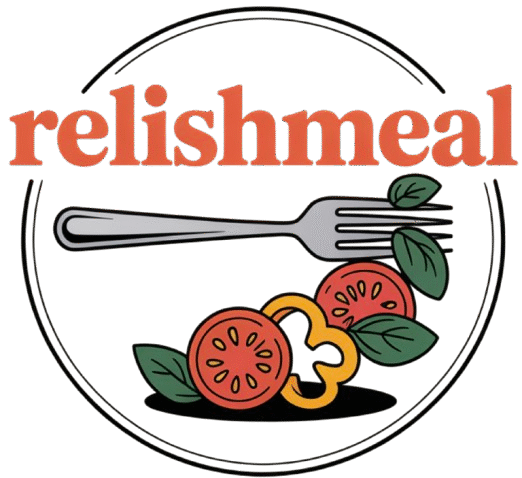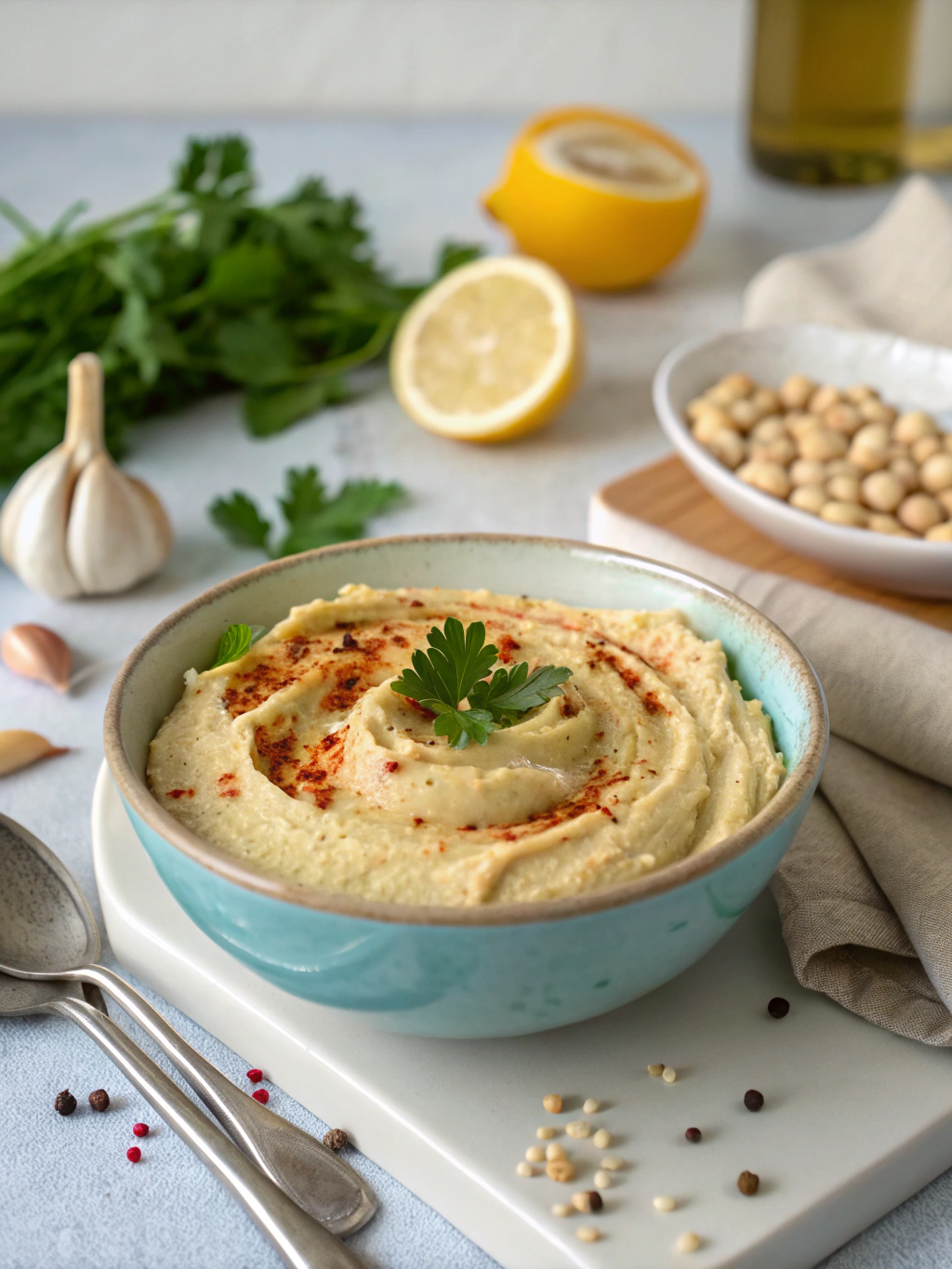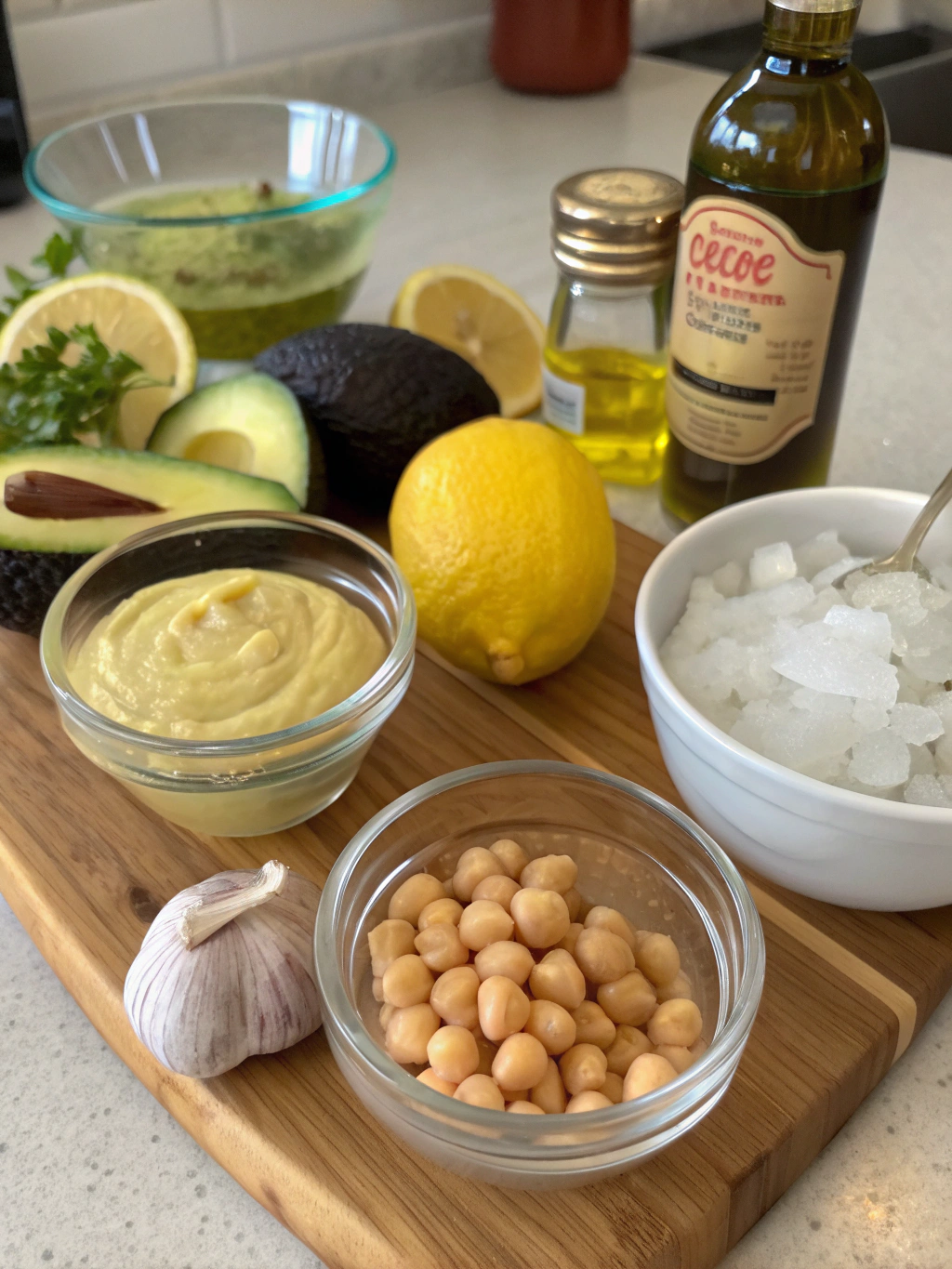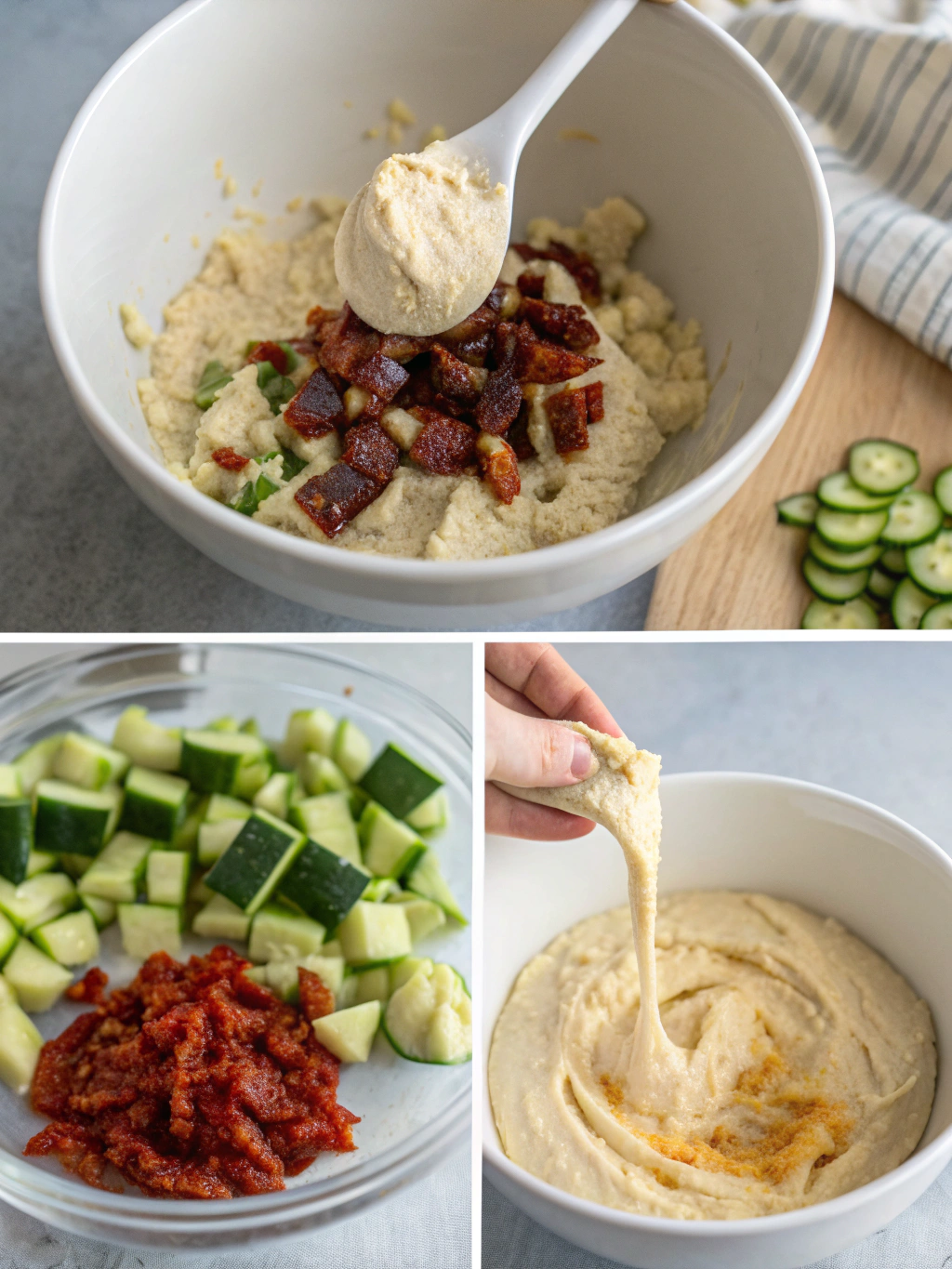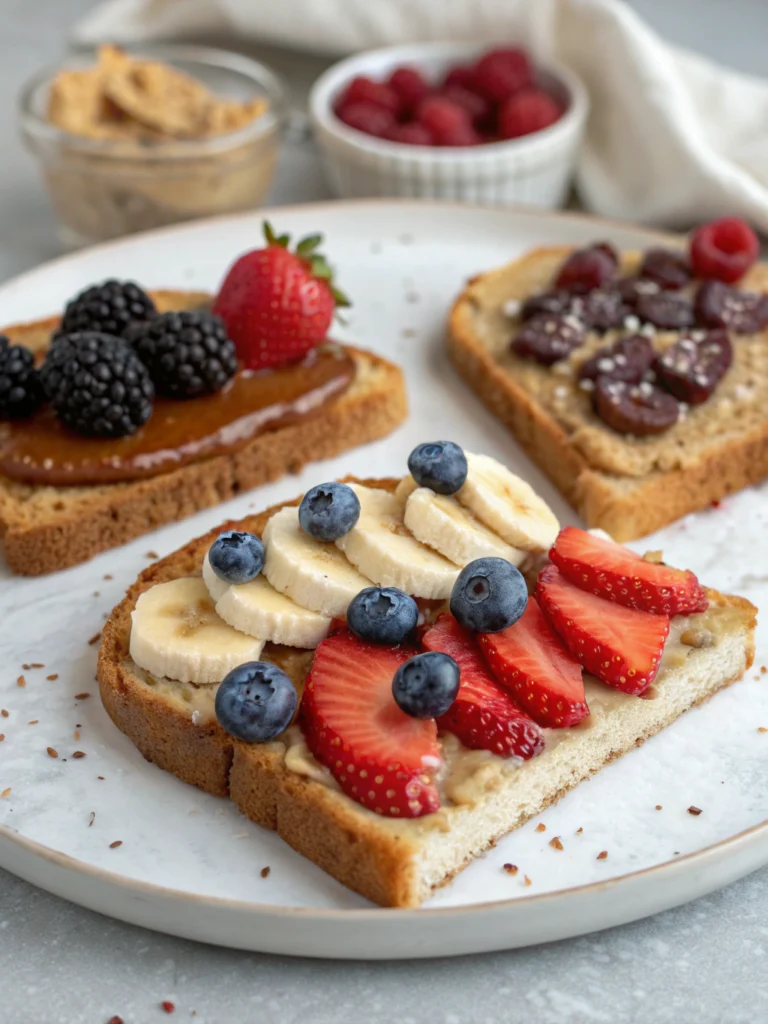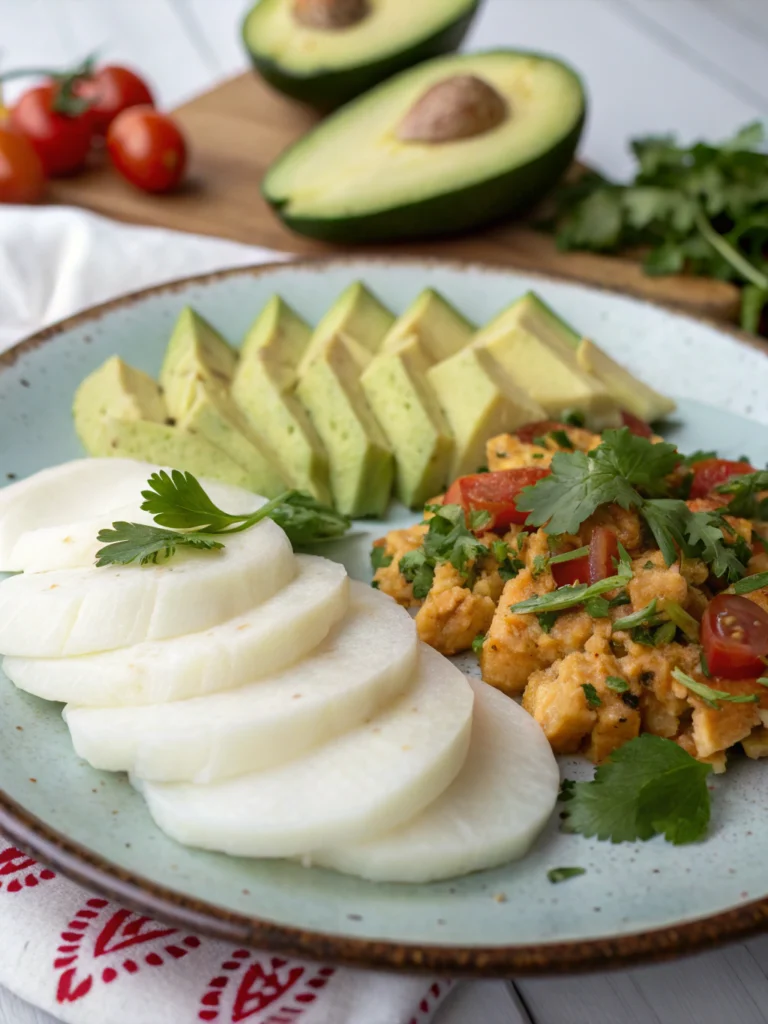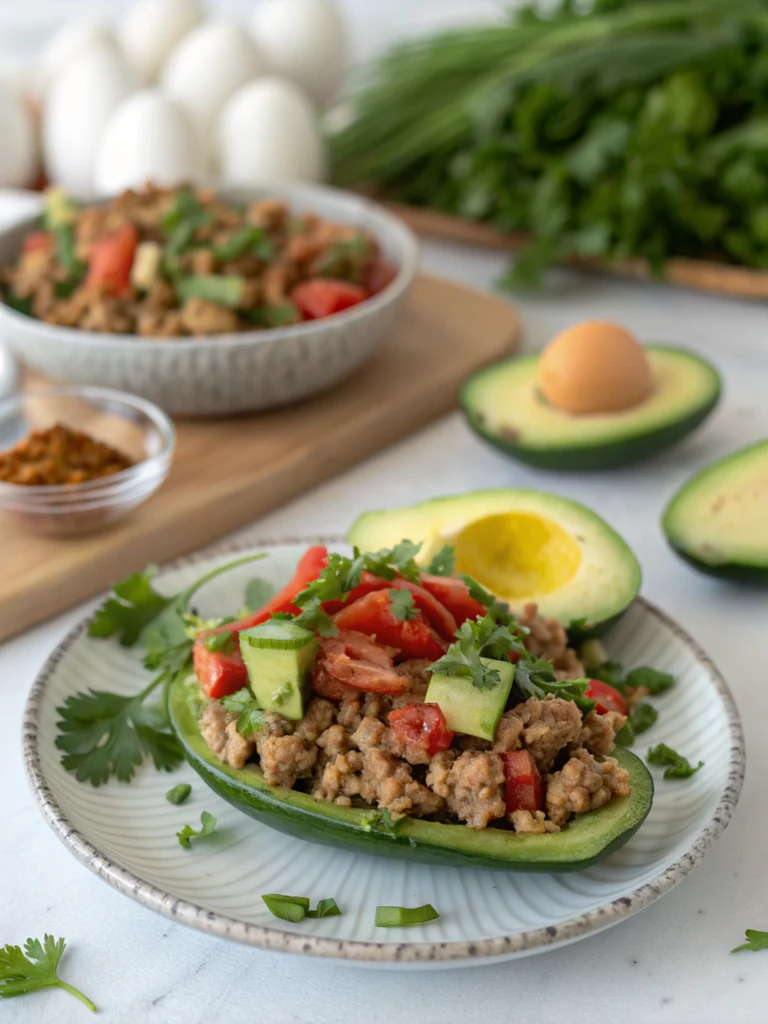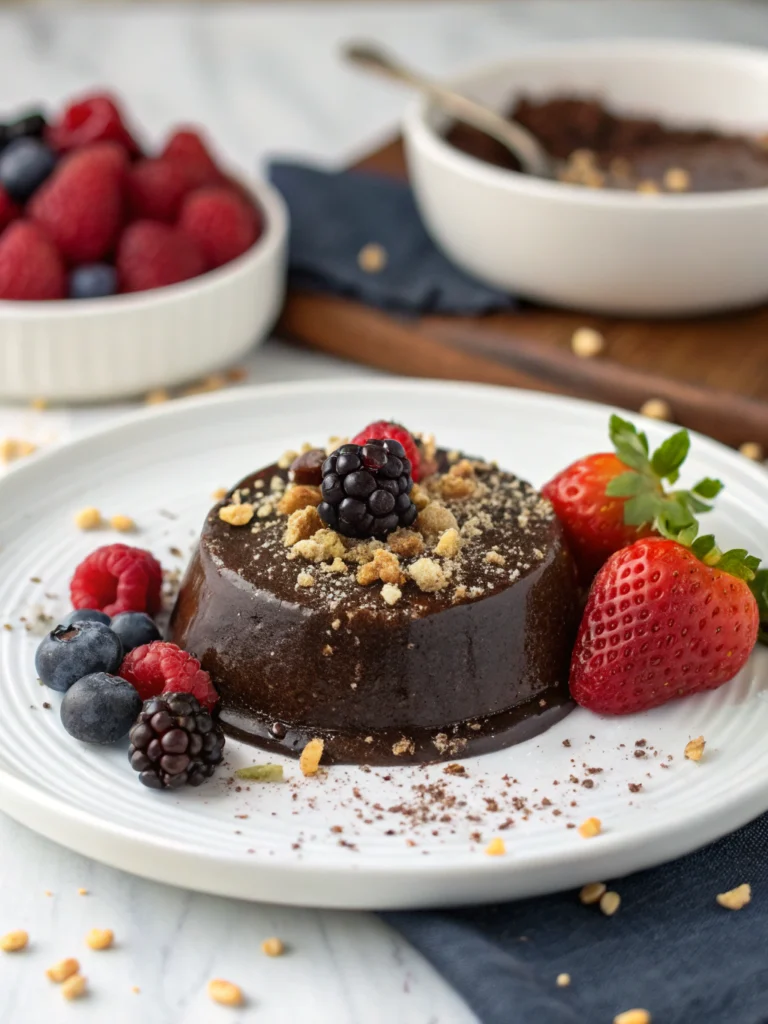Keto Hummus: A Creamy, Low-Carb Alternative to Traditional Chickpea Dip
Ever wondered if you could enjoy the creamy, garlicky goodness of hummus while staying true to your ketogenic lifestyle? Traditional hummus, made primarily from chickpeas, packs a hefty carb punch that can quickly derail your keto goals. But what if you could recreate that same addictive flavor and texture without the carb overload?
This keto hummus recipe transforms the classic Mediterranean dip into a low-carb delight that won’t kick you out of ketosis. Using cauliflower as the base instead of chickpeas, this clever alternative delivers all the flavor you crave with just a fraction of the carbohydrates. Perfect for dipping, spreading, or adding creamy texture to your favorite keto meals.
Ingredients List
- 1 medium head cauliflower (about 4 cups florets)
- ¼ cup tahini (sesame seed paste)
- 3 tablespoons extra virgin olive oil, plus extra for drizzling
- 2 tablespoons fresh lemon juice
- 2 cloves garlic, minced
- ½ teaspoon ground cumin
- ¼ teaspoon paprika, plus extra for garnish
- ¼ teaspoon sea salt (or to taste)
- 2 tablespoons water (if needed for consistency)
- 1 tablespoon chopped fresh parsley for garnish (optional)
For substitutions: If you’re allergic to sesame, sunflower seed butter can replace tahini. For a creamier texture, add 2 tablespoons of full-fat Greek yogurt. Can’t handle raw garlic? Try ¼ teaspoon garlic powder instead.
Timing
Preparation time: 10 minutes
Cooking time: 15 minutes
Cooling time: 10 minutes
Total time: 35 minutes
This keto hummus comes together in about half the time it takes to prepare and cook dried chickpeas for traditional hummus, making it not just lower in carbs but also more efficient for busy weeknight meal prep.
Step-by-Step Instructions
Step 1: Prepare the Cauliflower
Cut the cauliflower into small florets of roughly equal size. This ensures even cooking and prevents any raw spots in your final hummus. Rinse thoroughly under cold water to remove any dirt or debris that might be hiding between the florets.
Step 2: Cook the Cauliflower
Place the cauliflower florets in a steamer basket over boiling water. Cover and steam for 10-15 minutes until the cauliflower is very tender when pierced with a fork. Alternatively, you can boil the florets directly in water for 8-10 minutes, though steaming helps retain more nutrients.
Step 3: Cool the Cauliflower
Drain the cauliflower thoroughly and spread it on a clean kitchen towel or paper towels. Allow it to cool and release excess moisture for about 10 minutes. This crucial step prevents your keto hummus from becoming watery.
Step 4: Process the Base Ingredients
Transfer the cooled cauliflower to a food processor. Add the tahini, 2 tablespoons of olive oil, lemon juice, minced garlic, cumin, paprika, and salt. Process until smooth, stopping occasionally to scrape down the sides of the bowl with a spatula.
Step 5: Adjust Consistency and Flavor
Check the consistency of your hummus. If it’s too thick, add water, one tablespoon at a time, while processing until you reach your desired texture. Taste and adjust seasonings as needed, adding more salt, lemon juice, or garlic according to your preference.
Step 6: Serve with Style
Transfer the hummus to a serving bowl. Create a shallow well in the center with the back of a spoon. Drizzle the remaining tablespoon of olive oil into the well, and sprinkle with additional paprika and chopped parsley for a vibrant presentation.
Nutritional Information
This recipe yields approximately 2 cups of keto hummus, with each ¼ cup serving containing:
- Calories: 120
- Total Fat: 10g
- Saturated Fat: 1.5g
- Cholesterol: 0mg
- Sodium: 150mg
- Total Carbohydrates: 5g
- Dietary Fiber: 2g
- Net Carbs: 3g
- Protein: 3g
Compared to traditional chickpea hummus, which typically contains 9-12g net carbs per ¼ cup serving, this keto version reduces the carb count by approximately 70% while maintaining a similar protein profile.
Healthier Alternatives for the Recipe
While this recipe is already keto-friendly, you can make additional modifications to suit specific dietary needs:
- For extra protein: Add 2 tablespoons of hemp seeds to the food processor.
- For omega-3 boost: Replace 1 tablespoon of olive oil with avocado oil.
- For probiotic benefits: Stir in 1 tablespoon of sauerkraut juice before serving.
- For anti-inflammatory properties: Add ¼ teaspoon turmeric to the spice mix.
- For extra fiber: Mix in 1 tablespoon of ground chia seeds after processing.
Serving Suggestions
This versatile keto hummus pairs beautifully with various low-carb dippers and can enhance many keto-friendly meals:
- Serve with sliced bell peppers, cucumber rounds, celery sticks, or jicama for a refreshing snack.
- Use as a spread on keto cloud bread or almond flour crackers.
- Dollop onto grilled chicken or fish for a Mediterranean-inspired main course.
- Thin with additional olive oil to create a creamy salad dressing.
- Stuff into halved mini bell peppers for an impressive appetizer.
- Spread inside lettuce wraps with sliced turkey and avocado for a quick lunch.
Common Mistakes to Avoid
- Undercooking the cauliflower – Ensure it’s very tender for the smoothest texture. Undercooked cauliflower will give your hummus a grainy consistency.
- Skipping the cooling step – Hot cauliflower releases steam that can make your hummus watery. Always allow it to cool and release moisture.
- Using low-quality tahini – The tahini provides much of the authentic hummus flavor. Choose a high-quality brand without added sugars or fillers.
- Over-processing – While you want a smooth texture, excessive processing can heat the mixture and affect the flavor of the olive oil. Pulse in intervals.
- Not adjusting seasonings – Cauliflower is milder than chickpeas, so you may need more seasoning than in traditional hummus recipes.
Storing Tips for the Recipe
Your keto hummus will stay fresh in an airtight container in the refrigerator for up to 5 days. For best results, follow these storage recommendations:
- Store without garnishes and add fresh herbs and olive oil just before serving.
- Place plastic wrap directly on the surface of the hummus before sealing the container to prevent oxidation.
- If the hummus thickens in the refrigerator, let it come to room temperature before serving or thin with a splash of water or olive oil.
- For meal prep, portion into small containers for grab-and-go snacks throughout the week.
- This hummus can be frozen for up to 3 months. Thaw overnight in the refrigerator and re-blend with a splash of olive oil to restore the creamy texture.
Conclusion
This keto-friendly hummus offers all the creamy, garlicky satisfaction of traditional hummus without derailing your low-carb lifestyle. By cleverly substituting cauliflower for chickpeas, you get to enjoy a versatile dip that works beautifully as a snack, spread, or meal enhancer while keeping your carb count minimal.
Have you tried making this keto hummus recipe? I’d love to hear how it turned out! Share your experience in the comments below, or tag us in your creations on social media. And if you enjoyed this recipe, be sure to check out our other keto-friendly Mediterranean dishes that prove you don’t have to sacrifice flavor to maintain ketosis!
